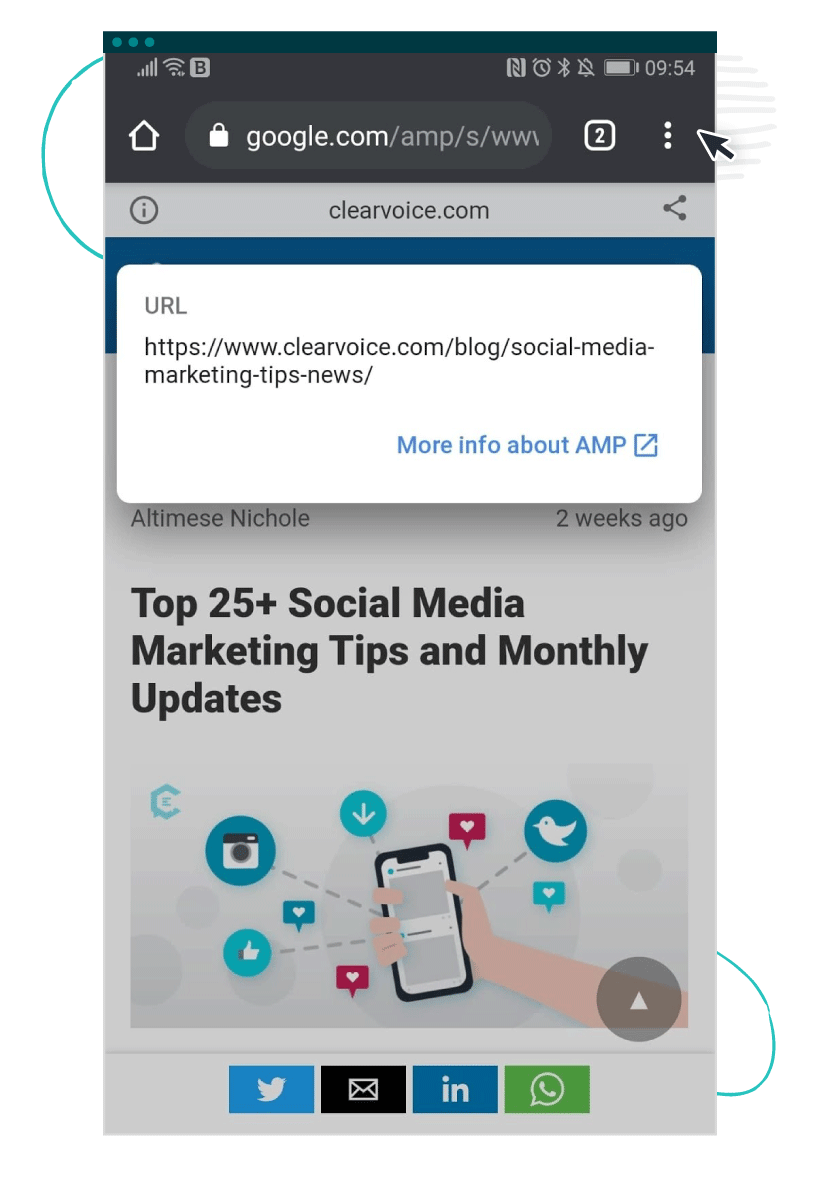What is Google AMP? Google AMP, short for accelerated mobile pages, is a web component framework meant to improve the mobile browsing experience. Pages built with AMP load significantly faster on mobile than their non-AMP equivalents.
Mobile has knocked desktop off its pedestal. Back in July 2019, Google switched to mobile-first indexing.
Google now predominantly uses the mobile version of your website for indexing and ranking. However, now that Google has switched its focus to Core Web Vitals, AMP is not as important as it once was.
As long as you focus on improving your Core Web Vitals, your site should do well with or without AMP. Still, let’s take a look at what accelerated mobile pages are and who should still consider using them.
What Is Google AMP?
Google AMP, short for accelerated mobile pages, is a web component framework meant to improve the mobile browsing experience. Pages built with AMP load significantly faster on mobile than their non-AMP equivalents.
This makes sense, because nearly 60 percent of global web traffic is now mobile (up from only 31 percent in early 2015). But it also means that websites not optimized for mobile browsing will suffer in the SERPs.
AMP is an open-source project with an open governance model, but Google initially created it. The company announced the framework in 2015 and started serving AMP pages to mobile users in 2016.
If you have a news site, you might want to consider still implementing AMP. Otherwise, Core Web Vitals should do the trick.
The AMP framework consists of three main components:
- AMP HTML. A subset of HTML meant to improve the performance speed of mobile pages. Although most HTML tags can remain as-is, some are replaced. For example, the <video> tag becomes <amp-video> in AMP HTML.
- AMP JavaScript. A JavaScript library that makes sure the AMP HTML pages render quickly. It does so primarily by disallowing synchronous JavaScript rendering. Any custom JavaScript can only be rendered asynchronously.
- AMP Caches. An AMP cache validates and serves AMP pages. Most AMP pages are currently delivered by either Google or Cloudflare’s AMP cache. This being said, any company can create an AMP cache if they so wish.
How to implement AMP
If you’re not a programmer, the above might sound a little scary. But it needn’t be. If your website is mostly static with little to no custom JavaScript, it’s not that much work to implement AMP. If you have a WordPress website, there’s even an official AMP plugin that makes the transition very easy.
If you do not use WordPress, the AMP website has many thorough, clear guides and tutorials that walk you through the transition. Making your website AMP-ready requires much fewer resources than creating a native mobile app would.

As a marketer, it’s in your best interests to use AMP for your website. In August 2019, Jun and Bustamante published a paper that showed AMP pages are significantly faster than their non-AMP equivalents.
How much faster? Two and a half times without pre-rendering and a staggering nine times faster with pre-rendering. The performance increase that comes with AMP will help your website’s SEO and rank it higher in the SERPs.
AMP success stories
- CNBC saw a 4x decrease in mobile load time when they switched to AMP. They also saw a 22 percent increase in mobile search users returning to their website within seven days.
- Times of India saw their pages load 3.6x faster load time when they switched to AMP. Indirectly, this led to 1.5x more revenue.
- BMW saw between 3-4x faster load times with AMP and a 30 percent increase in clickthroughs to their national websites. They also saw a 26 percent uptick in mobile users.
- Wired AMP’ed over 100,000 pages and saw a 25 percent increase in clickthrough rates from search results. This led to a 63 percent increase in clickthrough rates on their ads.
- Gizmodo now loads 3x faster on mobile because of AMP. They now have over 100,000 AMP page visits every day and have seen a 50 percent increase in impressions.
From email marketing to blog posts, let ClearVoice handle all of your content needs. Talk to a content specialist today to get started.




